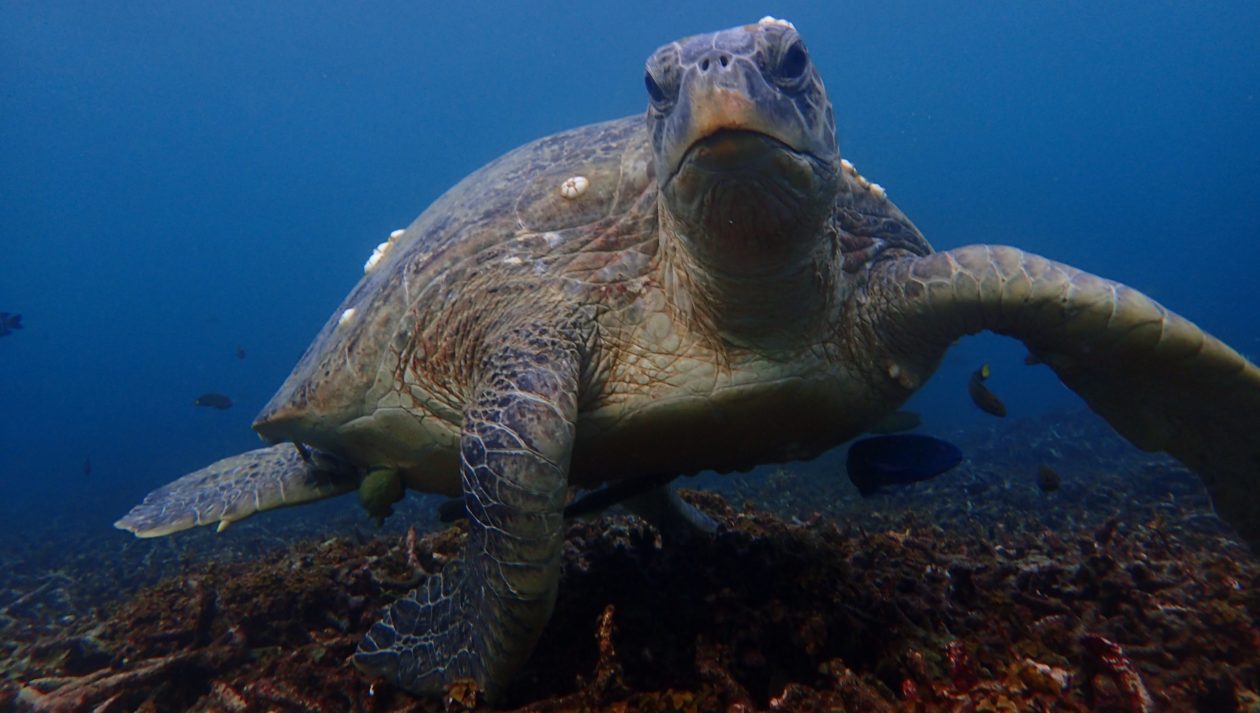Beautiful yet grey overcast this morning in Koh Tao. Descending the multitude of stairs leading up to our bungalow opens up a view of the bay that New Heaven resides on. In the earlier hours of the day, the tide has receded completely exposing various forms of marine life temporarily stranded until later in the day. Local fisherman take advantage of this by scavenging for the trade. Very simple scene in itself, comprised of various people wading through the eddy pools with the local dogs running around close by. I have never seen so many random dogs. I have never seen so many mixes of breeds. An island of mutts to say the least. This makes sense given the harsher living conditions. They would have to have the resiliency and health associated with mixes to stand up to the everyday life and lack of veterinary care.
Today’s plan is a little up in the air since Spencer has contracted some sort of sickness (stomach bug). This is quite common here given the bacteria in the main water supply. Simple hygienic tasks are done using bottled water or some other purified source. I suspect he contracted the ailment after trying to jump start a water pump used for cleansing the water in a tank built to cultivate coral for transport onto new artificial reef structures. These are frequently placed to facilitate new coral growth in sections decimated by mass bleaching events.
On that note, I think I have wrapped my head around the concept of coral bleaching and why it has become more prevalent in the last ten to twenty years. Coral has an interesting process of life in that it has a clear layer of skin approximately 2-3 mm thick and under this layer there are tiny organisms called zooxanthellae. These organisms absorb incoming radiation/light to produce the energy necessary for coral to feed. The process is identical to the photosynthetic processes used by plants. This also creates a vast array of colors which make the surface of the various species of coral vibrant in color. When bleaching occurs, the zooxanthellae absorb to much energy from higher temperatures and increased radiation which results in the release of ozone gases. These by products are toxic to coral so they effectively eradicate the organisms to preserve life, the result being nothing but a clear line of sight down to the white skeletal structure of the coral. During this unfortunate event, coral feeds on it’s retained fats and oils to survive and its digestive processes only operate at around 10-15% efficiency. Of course it can only maintain this state so long before death so the length of time associated with higher temperatures plays a critical role in the amount of damage the reefs sustain.
Because of this process, reef restoration has halted for the time being. It is useless to place more coral in the path of destruction while the conditions are still present so we have turned our attention to the removal of one of the most detrimental species to the heart of coral reefs, the crown of thorns star fish. During bleaching events, this COT stands to do the most damage by feeding on the coral in its weakened state. In light of this, our job today is to use long pairs of tongs to remove as many COT as possible. There disposal is most commonly done at the bases of trees to allow for the absorption of nutrients from the decomposition. It promises to be a challenging task due to the poisonous nature of its spines so cautioned must definitely be exercised, haha.
To wrap up this entry, I think it important to recognize the dynamic equilibrium ecological systems such as these depend on. this being said, the resilience demonstrated is remarkable in the face of natural obstacles but as I mentioned yesterday, it is far from being able to stand up to the impact of human beings. Although this induced imbalance is not always direct it can still be traced back to our macro impact on our surrounding environment and atmosphere in the use of fossil fuels and other processes that introduce large mounts of ozone gases. In a random flight that can only be attributed to my education I noticed while looking at a graph of significant bleaching events a strange resemblance to something I spent quite a lot of time analyzing in the past years, the solar cycle. This could be nothing but a small influence, but it seems as if the major bleaching episodes seen in the last fifteen years or so are concurrent with some of the higher points of solar activity. During these times, higher neutron release occurs from energetic releases (most commonly solar flares/coronal mass ejections) on the suns surface. Given a 70% coverage of the earth’s surface by oceans it is reasonable to assume that the increased rate of high energy neutrons during these periods would result in a large majority piercing the atmospheric layers to impact the shallower depths of our oceans. Impacts from these higher energy particles would impact Hydrogen and H2O molecules imparting large amounts of energy. Since energy is nothing but temperature wrapped up in a convenient little packet, could it be that it is responsible for increments increases in the temperature. the shallower depths pave the way for the effects we see on coral reefs given their strict depth restrictions. They require just the right depth to absorb enough energy through light. If too shallow, too much energy is absorbed resulting in bleaching. If too deep, energy is too little, making it impossible for coral to feed. I read an astounding statistic today. Coral reefs comprise 0.01% of our oceans but support circa 25% of all marine life. Incredible.
